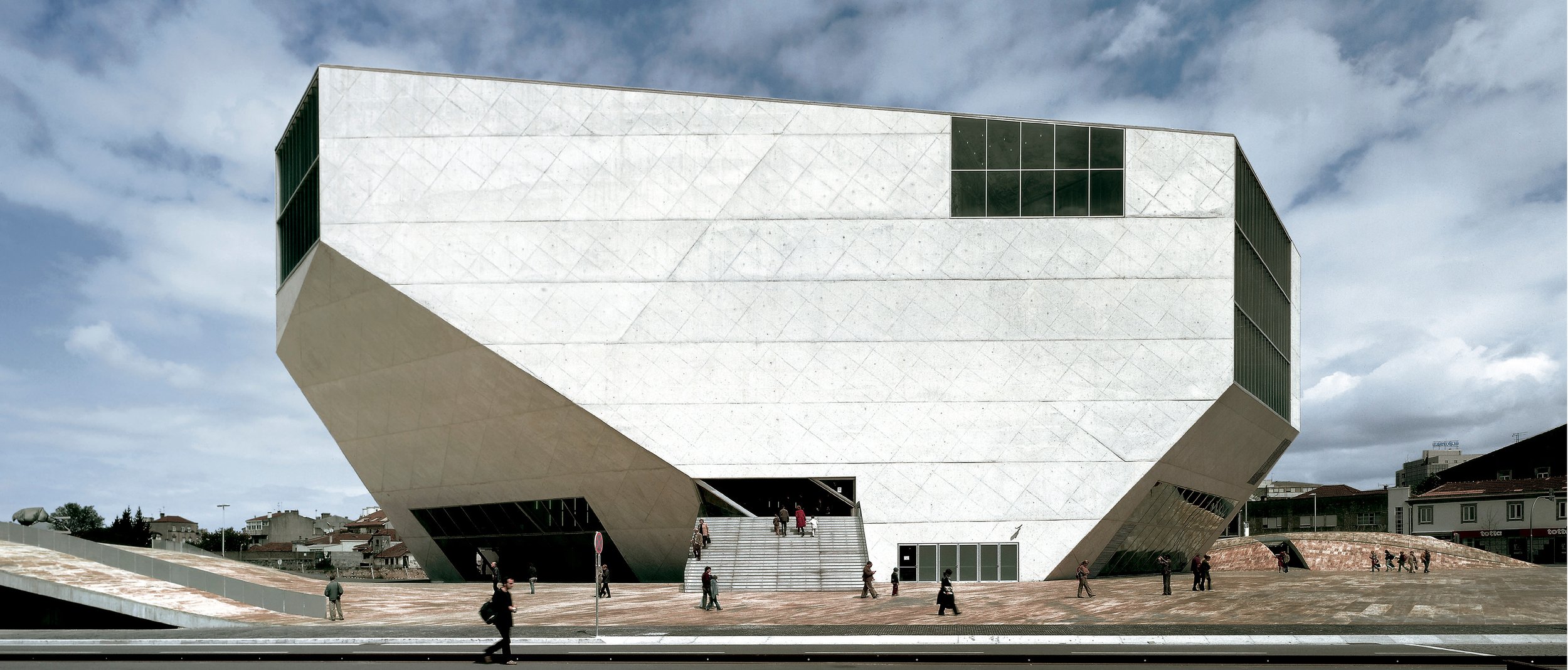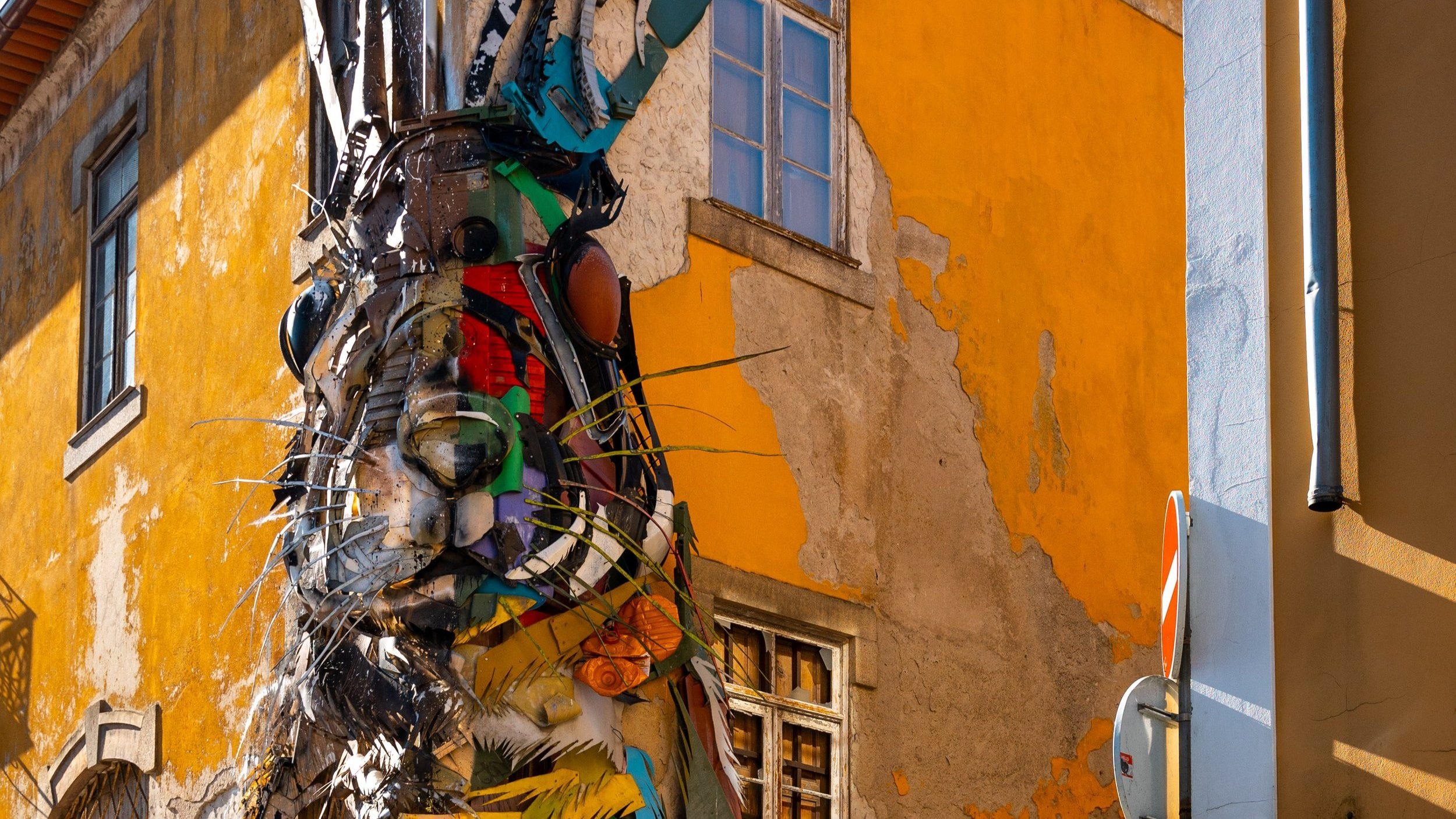A quick guide to Porto, Portugal
After visiting Porto for the fourth time in three years I decided that it was time for me to write a short guide to the city.
Read along to know what to see, where to take your pictures, where to stay and where to eat (not necessarily in this order).
Where to stay
I feel this is the first topic we should tackle as from this will depend everything: how to get there from the airport, eating spots and how much you will walk around.
My perfect spot would be something between the metro stations of Trindade and Aliados. Rua do Almada and Rua da Picaria are perfect streets to find accomodation in because they are very central yet not too noisy and the surrouding area is packed with restaurants, bars and beautiful buildings.
Getting to the city center
You’re in luck, this isn’t Berlin! Getting to the airport to the city center is very easy. You can take a bus or the metro, the latter being my favorite as it is not only cheap but rather fast.
The only line from the airport to the city center is the “E”, the purple one.
If you booked something near where I recommended you can get off at Trindade and then walk some.
Something that might be helpful
You have to actually purchase a ticket for the metro as there’s no paying on the go like in London, New York, Milan etc. If you are not travelling alone mind that each person should have their ticket. The ticket machine will ask you how many trips to charge in the ticket: don’t think to buy 3 trips on one ticket because you are 3 people, it doesn’t work that way. If you are a group of 3 people everyone should purchase one ticket with (at least) one trip.
The ride to the city center should take about 30 minutes.
What to see and do
Ponte Luis I
It’s probably Porto’s most famous landmark. When you walk along the bridge, crossing the Douro into Villanova de Gaia (or just Gaia), you can really apreciate the height, the river and the view of the city. Also the trams that rush past are quite nice, just be careful when crossing from one side to the other. I recommend going up the bridge both during day and at night to get different views of the landscape.
See it in Google Maps: https://goo.gl/maps/x7YK6PTXNTevRMA26
Cais da Ribeira
Cais da Ribeira is a raised embankment leading away from Praça da Ribeira (Ribeira Square) toward the Ponte de D. Luís I. If you head west, the promenade raises further and narrows down a bit, turning into the Muro dos Bacalhoeiros, which is wedged between the riverside and a bevy of polychromatic buildings huddled together in mass.
Source: Cais da Ribeira and Praça da Ribeira (Ribeira Square) Porto, Portugal (visitar-porto.com)
You’ll find plenty of places to have lunch or dinner but to me they all feel a bit too turistic, they might still be good tho, I haven’t tried. If you are looking for my favorite places to eat in porto skip to the “Where to eat“ section down below.
See it in Google Maps: https://maps.app.goo.gl/21xbSXr2qYuFJ6Ka8
Douro River cruise
While exploring Cais da Ribeira why not take in some of the amazin sights with a river cruise? That’s not something I typically do but it is not expensive, lasts about 45 minutes and you get to see the city and its bridges from a different perspective. I honestly enjoyed it!
You can book a cruise in one of the many stalls you’ll find in the riverfront.
See it in Google Maps: https://maps.app.goo.gl/G3LQ6b6gwKVdityd8
Palacio da Bolsa
I’m not one to visit many buildings as I prefer to walk around and see them from the outside but rain happens and this has some beautiful rooms.
Check the website if you plan on visiting because on some dates it’s closed to public.
Website: Tourism – Palácio da Bolsa (palaciodabolsa.com)
See it in Google Maps: https://goo.gl/maps/6seKAML9AS8oEeHfA
Igreja de Sao Francisco
Set near the Bolsa Palace which was partly built on the grounds of St. Francisco convent, this is one of Porto's best churches. There's a pretty high entry fee (8 Euros if I remember correctly), but if you’re into churches or architecture it’s probably worth it.
The interiors are unbelievably rich, covered in detailed gilded wood work. The ticket enables you to visit a museum and the catacombs which are interesting.
Website: Museu (ordemsaofranciscoporto.pt) (in Portuguese only)
See it in Google Maps: https://goo.gl/maps/gcDYxHAGXdMVJPXD8
Igreja do Carmo
Another building that I consider prettier from outside. This church was built in the second half of the eighteenth century. Due to its architecture and interior carvings, it is considered to be one of the most remarkable buildings of Porto rococo. In 1912, its lateral façade was covered with tiles. The drawings on those tiles were designed by Silvestre Silvestri. They are figurative compositions alluding to the cult of Nossa Senhora (Our Lady).
Source: Visit Porto - Carmo Church
See it in Google Maps: https://maps.app.goo.gl/i4RLGPx5XCiX1sMB7
Torre dos Clerigos
The Torre dos Clerigos was built in the mid-eighteenth century by architect Niccolo Nasoni, and its 75-meter height makes it an ideal place to view the city from above. The Clerics’ Tower is part of a larger architectural complex that also includes the Church and the Brotherhood House, which has now become a museum.
Source: https://www.portugal.net/en/porto/torre-dos-clerigos/
If you want to visit you better get your tickets online in advance because on most days it is sold out.
Tickets: Torre dos Clerigos Entrance Tickets
See it in Google Maps: https://maps.app.goo.gl/MxnN33L2ZnLTFRmCA
Sè do Porto (Porto’s Cathedral)
The Porto Cathedral is a Roman Catholic church located in the historical centre of the city of Porto, Portugal. It is one of the city's oldest monuments and one of the most important local Romanesque monuments.
Source: Porto Cathedral - Wikipedia
It was built at the same time as Porto’s walls in the XII century and, on the exterior, you can see some of its original church-fortress elements: just look at the two bell towers! You can enter and even go up to the top of the towers.
See it in Google Maps: https://maps.app.goo.gl/qir7ZFPrFCY3K3CB6
Capela das Almas
Capela das Almas (Chapel of Souls) was the first mother church of Viana until the mid-15th century, when the Cathedral was built within the walled perimeter. Traditionally known as Matriz Velha (Old Mother Church), it was renamed the Chapel of Souls because its churchyard had been the burial place from the time of King Afonso III until the end of the 19th century.
All that is left of the original thirteenth-century structure, rebuilt and added to in 1719 on the orders of the canon Domingos de Campos Soares, is an arcosolium in the south wall of the chapel and the high altar cross, while otherwise the building is typical of small eighteenth-century Baroque churches.
There is no entry fee but, in my opinion, it is much more beautiful on the outside.
Source: Capela das Almas | www.visitportugal.com
See it in Google Maps: https://maps.app.goo.gl/u7Cxsvws9Eh4SVv39
Casa da Musica
Conceived to mark the festive year of 2001, in which the city of Porto was European Capital of Culture, Casa da Música is the first building built in Portugal exclusively dedicated to Music, whether in the field of public presentation and enjoyment, or in the field of artistic training and creation.
Source: The House - Casa da Música (casadamusica.com)
Its architecture alone deserves a visit from the outside but guided tours (some even end with a concert) of the inside are avaible. More info at Guided Tours - Casa da Música (casadamusica.com).
See it in Google Maps: https://maps.app.goo.gl/Dst1GPGtLoEkXRs29
Mercado Bom Sucesso
One of the most iconic markets in the city of Porto. The past is revisited in the new Bom Sucesso Market: through the familiar colors and scents of fruit and vegetables, one can almost hear the market woman’s catchy cries. Modern days are still filled with those scents and colors, but the Market has gone a step further by adding new delicacies and flavors.
The place invites visitors to find out more about its history and about the road taken until the present day. In here all five senses are awakened.
Source: The Concept | Mercado Bom Sucesso
See it in Google Maps: https://maps.app.goo.gl/K52AimN5vUr5DyKWA
Liberdade square
The Praça da Liberdade (Liberty Square) is Porto’s main square and it connects the old town with the modern part of the city. The plaza is in the heart of Porto, very close to the Torre dos Clérigos (Clérigos Tower) and São Bento Railway Station.
In the middle of the Praça is a 10-meter bronze equestrian statue of King Peter IV from 1862. The King holds the Constitution in his hands and shows it to the people, itself a symbol of the King since he fought to protect it during the Liberal Wars. At one end of Liberdade Square is Porto’s main artery, Avenida dos Aliados.
Source: Praça da Liberdade - The most important square in Porto (introducingporto.com)
See it in Google Maps: https://maps.app.goo.gl/hQKo37M4q3RPL8SU7
Jardins do Palacio de Cristal
The Crystal Palace Gardens can be found in the high part of Porto, and are a delightful green space, offering privileged views of the city, the mouth of the River Duero and the Atlantic Ocean.
In the gardens, you can visit various themed areas, such as the aromatic plant garden, the medicinal plant garden, the feelings garden, rose garden, or the forest.
Source: Jardins do Palácio de Cristal - Beautiful gardens in Porto (introducingporto.com)
See it in Google Maps: https://maps.app.goo.gl/LfJ9C975v2wNdWwU8
Villanova de Gaia
Although it is often believed to be part of Porto, Vila Nova de Gaia or simply Gaia is a city in its own right, located on the other side of the Douro.
Vila Nova de Gaia has a pretty promenade along the waterfront and is a great place to go for a walk and enjoy the remarkable views of the Dom Luís I Bridge and the picturesque neighbourhood of Ribeira in Porto and its terraced colourful houses. Another great thing to do is to take a cruise down the Douro River or visit some of Porto’s famous wineries and vineyards.
One of the most typical images of Gaia are the “rabelo boats”, small traditional wooden boats that were originally used to transport the barrels of wine across the river and have nowadays become cruise boats for tourists that wish to explore the Douro.
Source: Vila Nova de Gaia - Famous for its Porto wine cellars (introducingporto.com)
See it in Google Maps: https://maps.app.goo.gl/FPgGEujnapdYybJU8
Where to eat (and drink)
Instead of listing a bunch of places here I’ll just share my evergrowing Google Maps’ lists of favorite places and recommend a couple of must-visit. From breakfast or brunch to quick bites or fancy restaurants I got you covered. Want to enjoy some Porto wine on a rooftop? I got a list for those too!
Breakfast and brunch: https://maps.app.goo.gl/kVzVfJEUFCaNJ6hG6
Going vegan? Don’t skip Nola Kitchen
Quick bite and lunch: https://maps.app.goo.gl/bCrkGK6s3UBGCvzz5
Want to feel like a local? Go to Gazela
Restaurants: https://maps.app.goo.gl/vgEQm64LbMze4byP9
Two of my favorite restaurants in the world are in this list: Cruel and Rua Tapas. Fancying a burger? I got you covered! Visit Holy Sandwitch Shop. You’re welcome!
Rooftops: https://maps.app.goo.gl/V8RqfzPMaEzqEx6SA
Drinks: https://maps.app.goo.gl/w3b9oK2nirgbiGvx8
My absolute favorite is The Royal Cocktail Club but if you want to experience something different (and with generous portions) head to Capela Incomum.
Photo spots
Old City Center
You can’t go wrong roaming the alleys of the old city center. Just walk around following the light and make sure to revisit those places that you like best as the light changes during the day. It will be tiring but rewarding.
Sao Bento Railway Station
old, deteriorating but grand and feels like it's straight from some old movie. AND what's even more interesting about it is people - arriving and departing characters, or people waiting in the main hall in front of the train schedule, or standing in the doorways in sunset, or sitting in the trains (windows are big and train cars are well lit inside). I literally was starting and ending every day from this station and spent many many hours shooting there at different times of the day.
Ponte Luis I
Go to the bridge at sunset to photograph fishermen or early morning so see the fog and get some moody shots. Walk up and down the stairs on the left of the bridge and spend some time exploring this small area. Depending on the season, the top of the Dom Luis Bridge could provide some nice golden hour photos but I still prefer the moodyness of the morning.
Majestic Café
The Belle Epoque is alive and well at Porto’s beautiful Majestic Café. The eye-catching cafe is considered one of the most beautiful cafes in the world.
Casa da Musica
It’s a concert hall built with a type of architecture that will make for good minimalistic shots (we’re talking Mark Fearnley style). The best light here will probably be around or before sunset but I think that mostly depends on you (I like midday light better).
Foz do Douro
You can get public transport there but walking is probably your best bet as I believe there are some good photo spots along the way. If you decide for the public transport, take the historic tram. It’s slow but can also provide for the occasional good shot.
When you finally get to Foz, you will see a long pier that goes into the ocean and ends with a red lighthouse. There is also a beach and usually some people all around. If you factor in the powerful ocean waves crashing against the pier and the shore you’re almost guaranteed a nice picture!
Capela das Almas and Rua de Santa Catarina
Capela das Almas is a little charmer of a church. It’s completely wrapped with a ornate blue and white tile mural on its entire exterior.
packed with stores and crowded by tourists, you still have a lot of opportunities to photograph natives who are rushing to/from work or heading toward churches. If you turn to some smaller side streets, you will have a chance to observe daily life, older people reading newspapers and drinking espresso/wine, or smoking together at building corners.
Jardim de São Lázaro
You can easily get some iconic shot of gentlemen chilling or playing chess!
Bonfim
Far less crowded by tourists and overall a more authentic vibe. Probably my favorite area in the city, you’ll find a bit of everything: people feeding pigeons, people playing chess, children playing in the street, etc.
Igreja do Carmo
The Carmo is actually two churches, Igreja do Carmo and Igreja dos Carmelitas. They are separated by a tiny thin house, which is the narrowest house in Porto.
Sé Cathedral Terrace
You can feast your eyes on photogenic azulejo tiles. You also get grand view for more photos of the pretty city.
Villanova de Gaia
On the other side of the Douro river you’ll find the town of Gaia, famous for its Port wine winemakers. The river-facing area is very commercial and I haven’t got a good shot there yet but you just need to go into the alleys behind the front and you’ll find some decent photo spots.
Mundo Fantástico da Sardinha Portuguesa
Go at night to see everything around it lightened up by its bright yellow lights!
















